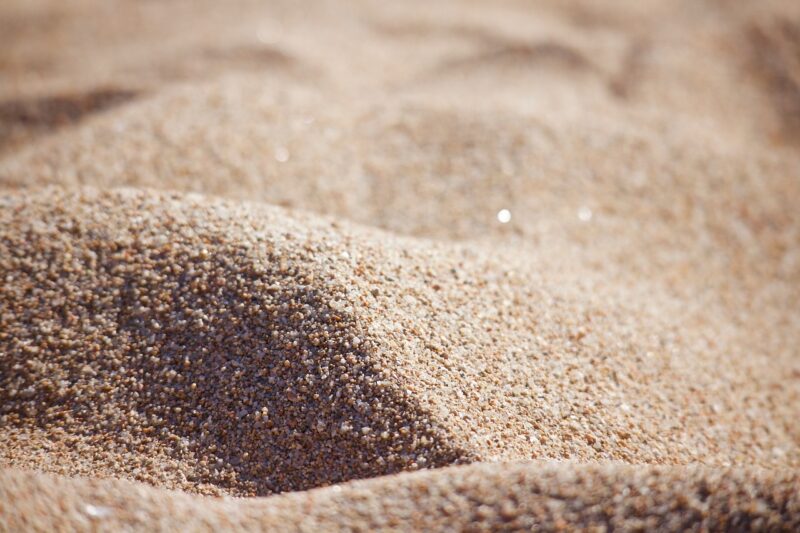Exploring the Different Types of Sand: Why Not All Sands Are Created Equal
November 14, 2024

Sand is one of the most ubiquitous materials on earth, found in deserts, beaches, and riverbanks. It’s not just a simple granule of material; different types of sand are fundamentally distinct and have unique properties, uses, and origins. In this article, we’ll explore the varieties of sand, their geological formation, their implications in construction, playgrounds, filtration systems, and beyond. Understanding the differences is crucial for industries as diverse as construction, manufacturing, landscaping, and even surfing.
1. The Geological Origins of Sand
To appreciate the variety of sands, it’s essential to understand their geological origins. Sand primarily originates from the weathering and erosion of rocks. The particles of sand are typically made up of silica (SiO2), quartz being the most common mineral. However, the source rock can significantly influence the color, texture, and mineral composition of sand. The key geological formations that lead to different types of sands include:
- Igneous Rocks: Originating from volcanic activity, igneous rock sands, such as basalt, contain a higher concentration of iron and can appear darker in color.
- Sedimentary Rocks: These rocks are formed through the deposition of minerals over time. The sand derived from limestone may contain fossils, while sandstone can reflect a variety of colors depending on the minerals present.
- Metamorphic Rocks: When sedimentary rocks undergo heat and pressure, they form metamorphic rocks. Sands from these formations have unique characteristics influenced by the minerals present, such as schist or gneiss.
The interplay of these geological processes gives rise to a diverse range of sand types.
2. The Different Types of Sand
The world of sand can be categorized into several primary types, each suited for specific applications:
2.1. Beach Sand
Typically composed of fine particles, beach sand often includes a mixture of quartz, shell fragments, and coral. Its light color and fine texture make it ideal for recreational areas. However, the composition can vary greatly depending on the location; for instance, Hawaiian beaches may be black from volcanic sand.
2.2. Construction Sand
Often known as concrete sand, this type is washed and graded, providing the necessary size and shape to create a strong structure. Coarse and gritty, its angular particles interlock, providing stability in construction projects. It’s critical for making concrete, masonry, and asphalt.
2.3. Play Sand
This type of sand is specifically formulated for children’s sandboxes. It is typically cleaned and screened, free from contaminants and sharp objects, ensuring it is safe and soft. Play sand is often fine and has a smooth texture, making it fun for sculpting.
2.4. Marine Sand
Found in oceanic environments, marine sand has a higher salt content and is often coarser. While it’s less common for construction, marine sand finds applications in beach nourishment and habitat restoration due to its natural properties.
2.5. Silica Sand
Silica sand is primarily composed of quartz, making it an essential ingredient in glass-making, casting, and metal production. Its purity and size make it highly desirable in industrial applications, where precise grading is crucial.
3. Understanding the Properties of Different Sands
Each type of sand possesses unique properties that dictate its best uses. Here’s a closer look at these attributes:
3.1. Grain Size and Texture
Grain size varies significantly among sand types. Beach sand is generally finer than construction sand, which is coarser due to its angular shape. Finer grain sands can lead to a smoother surface, while coarser sands improve drainage but reduce workability.
3.2. Chemical Composition
The chemical makeup of sand can affect its application. Silica sand contains high levels of quartz, making it ideal for glassmaking, while limestone sands can buffer acidity when used in gardening or filtration.
3.3. Color and Aesthetic Value
Sands can range in color from white to black or red, depending on mineral content. Aesthetic considerations might lead to preferring certain sands for landscaping or recreational beaches.
4. Applications of Different Sands
Understanding the differences in sand types allows various industries to optimize their use:
4.1. Construction Industry
Construction sand must meet specific performance standards and specifications. Coarse sands are preferred for concrete and mortar, while fine sands are used in finishing and plastering work. Understanding these requirements helps enhance the quality and longevity of structures.
4.2. Landscaping
In landscaping, the aesthetic and functional properties of sand can drastically change the appearance of gardens. Colored sands can create pathways, while finer sands improve drainage in soil.
4.3. Recreational Use
From beach volleyball courts to children’s play areas, the type of sand selected can significantly impact activities. Fine, clean sand tends to be more enjoyable for play, while coarser sand can be better for drainage in outdoor sports arenas.
4.4. Industrial Use
Silica sand holds a special place in industries ranging from manufacturing to oil and gas extraction, where properties such as porosity and permeability are vital. Each application requires careful consideration of sand properties to maximize efficiency.
5. Sustainability and Environmental Impacts
With rising construction demands, sand extraction has led to significant environmental challenges, including habitat destruction and ecosystem imbalance. The sustainability of sand resources is becoming a pressing issue in many regions.
Future trends focus on recycling and reusing sand in construction and finding alternatives to traditional sand sources. These initiatives aim to protect natural ecosystems while meeting industrial demands.
Conclusion
As we’ve explored, not all sands are created equal. The distinctions in geological origin, composition, and suitability for various applications highlight the importance of selecting the right type of sand for specific needs. Furthermore, understanding sand types contributes not only to enhancing structural integrity and aesthetic appeal but also plays a critical role in environmental sustainability.
Next time you’re at the beach or squishing sand between your toes, remember that what you’re feeling is the result of hundreds of thousands of years of geological history, perfectly suited to the environment and uses we encounter every day.








